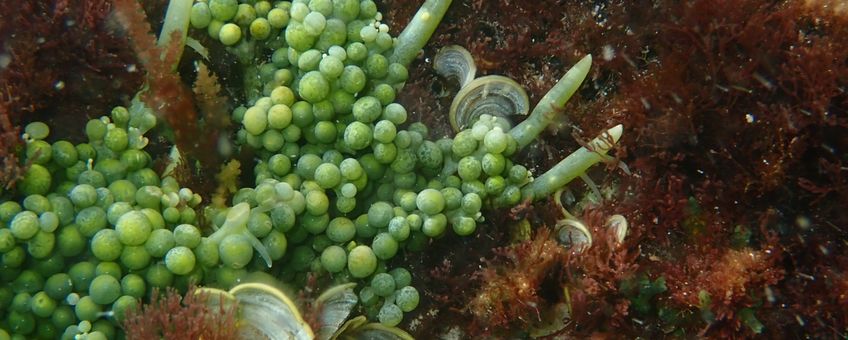
Get to know Bonaire’s seaweeds
ANEMOON Foundation, Dutch Caribbean Nature Alliance (DCNA), Naturalis Biodiversity Center, STINAPA Bonaire, World Wide Fund for Nature – NetherlandsSeaweeds: important organisms
Seaweeds (also called marcoalgae) are mostly notorious as aggressive competitors for space that can overgrow reef corals. Seaweeds, however, play an important role in many coastal environments. Often overlooked, this underwater macroalgae is crucial for sustaining a healthy reef and fish population. Seaweed is important as it is a food source for a variety of animals, such as sea turtles, manatees and small crustaceans. Through photosynthesis, seaweed is also an important supplier of oxygen along with serving as a natural water filter, removing heavy metals. Due to its ability to filter water, it can also serve as a bioindicator for the health of an environment. In addition, seaweeds can provide important habitats and nursery grounds for many different species of fish and invertebrates.
Expedition
A collaborative effort was recently taken to document the various types of seaweed off the coast of Bonaire. During the Naturalis Biodiversity Center and ANEMOON Foundation expeditions hosted on Bonaire last October and November, seaweed species were identified and ID cards were created to serve as an educational tool for the island. This effort was funded by the World Wildlife Fund (WWF-NL), the Treub Maatschappij and the Nature of the Netherlands program of Naturalis Biodiversity Center. STINAPA Bonaire, Dutch Caribbean Nature Alliance (DCNA) and Dive Friends dive shop provided crucial logistic support and Luna van der Loos and Godfried van Moorsel (Ecosub) provided the photographs.
Seaweeds on Bonaire
Bonaire is home to over 250 different species of seaweed. These macroalgae can be found in a wide range of areas, from shallow reefs to deep within the mangrove forests. Nearly 60 of the most common species are featured on the 'Common Seaweeds of Bonaire' ID Cards. These cards highlight the importance of each species and help users with their visual identification.
ID cards seaweeds
These macroalgae play a critical role in the marine ecosystem. By making them easier to identify, ocean goers will hopefully gain a new appreciation and awareness for seaweed. The ID cards are available for download on the Dutch Caribbean Biodiversity Database.
Download your ID cards and be sure to place your sightings (and photographs) on: dutchcaribbean.observation.org.
Text: Dutch Caribbean Nature Alliance
Pictures: Luna van der Loos, Ecosub (lead photo: Caulerpa macrophysa, a common green algal species of Bonaire. This algae forms mats tightly attached to rocks and corals, often in the intertidal or shallow areas)

